
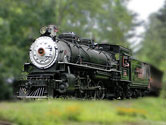






Museum

Mad River & Nickel Plate Railroad Museum

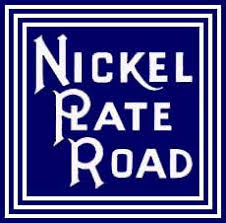
 ne of the earliest railroads that ran through Bellevue in 1839 was the Mad River & Lake Erie Railroad, and the first engineer of the "Sandusky", Thomas Hogg. The Mad River & NKP Railroad Society, a non-profit organization, chose this as part of our name when we formed NKP is the AAR reporting mark for the Nickel Plate Road (New York, Chicago & St. Louis Railroad Company) which ran through Bellevue from 1882 until 1964, when it merged with the Norfolk & Western Railway. Bellevue was a hub for the Nickel Plate operations and a division point for the railroad's Buffalo to Chicago route. Bellevue housed the principal classification yards, the largest roundhouse in the system, all maintenance of way equipment for the road, the principal icing station, an engine terminal for both diesel and steam, headquarters of the general superintendent, and facilities that were used by four of the Nickel Plate's divisions.
ne of the earliest railroads that ran through Bellevue in 1839 was the Mad River & Lake Erie Railroad, and the first engineer of the "Sandusky", Thomas Hogg. The Mad River & NKP Railroad Society, a non-profit organization, chose this as part of our name when we formed NKP is the AAR reporting mark for the Nickel Plate Road (New York, Chicago & St. Louis Railroad Company) which ran through Bellevue from 1882 until 1964, when it merged with the Norfolk & Western Railway. Bellevue was a hub for the Nickel Plate operations and a division point for the railroad's Buffalo to Chicago route. Bellevue housed the principal classification yards, the largest roundhouse in the system, all maintenance of way equipment for the road, the principal icing station, an engine terminal for both diesel and steam, headquarters of the general superintendent, and facilities that were used by four of the Nickel Plate's divisions.

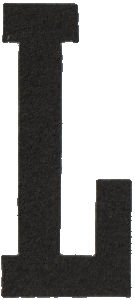 ocated in Bellevue, Ohio, the Mad River & Nickel Plate Railroad Museum was formed in the 1970s and today maintains a large outdoor collection of static locomotives and rolling stock with ties to the various railroads that once plied central Ohio and the greater midwest region. First and second generation diesel-electric motive power from a variety of roads and manufacturers are featured, as well as the recent acquisition of steamer #757, a Nickel Plate Berkshire — sister mainline power to the better-known Nickel Plate #765. As it was for most of the previous century (Nickel Plate, Norfolk & Western, etc.), the town of Bellevue remains for the Norfolk Southern a major mainline division point, hump yard, and locomotive maintenance facility. A railfan pavilion is located amid several diverging Norfolk Southern lines, near the museum.
ocated in Bellevue, Ohio, the Mad River & Nickel Plate Railroad Museum was formed in the 1970s and today maintains a large outdoor collection of static locomotives and rolling stock with ties to the various railroads that once plied central Ohio and the greater midwest region. First and second generation diesel-electric motive power from a variety of roads and manufacturers are featured, as well as the recent acquisition of steamer #757, a Nickel Plate Berkshire — sister mainline power to the better-known Nickel Plate #765. As it was for most of the previous century (Nickel Plate, Norfolk & Western, etc.), the town of Bellevue remains for the Norfolk Southern a major mainline division point, hump yard, and locomotive maintenance facility. A railfan pavilion is located amid several diverging Norfolk Southern lines, near the museum.
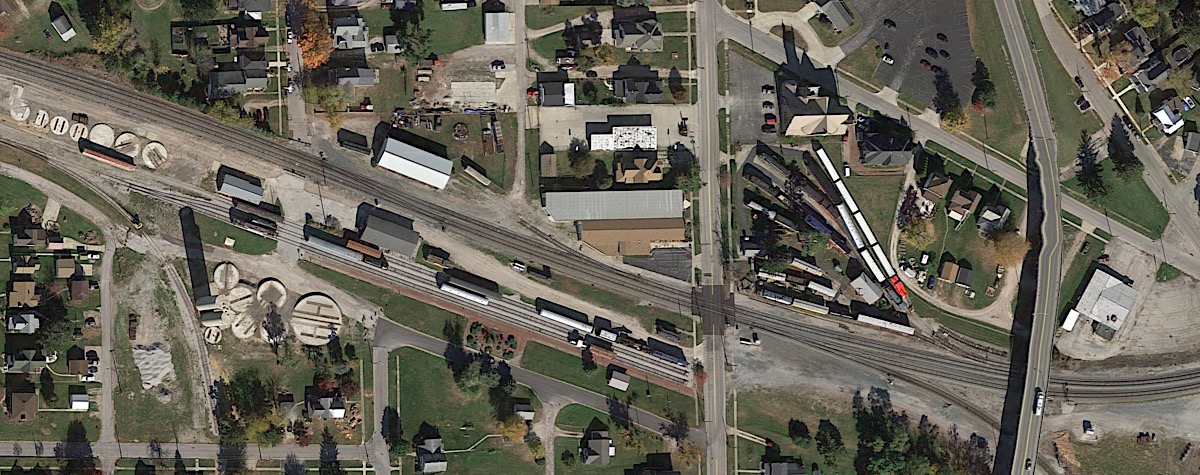
Mad River museum overhead / Google Maps

Click to see the Mad River museum grounds plotted on a Google Maps page
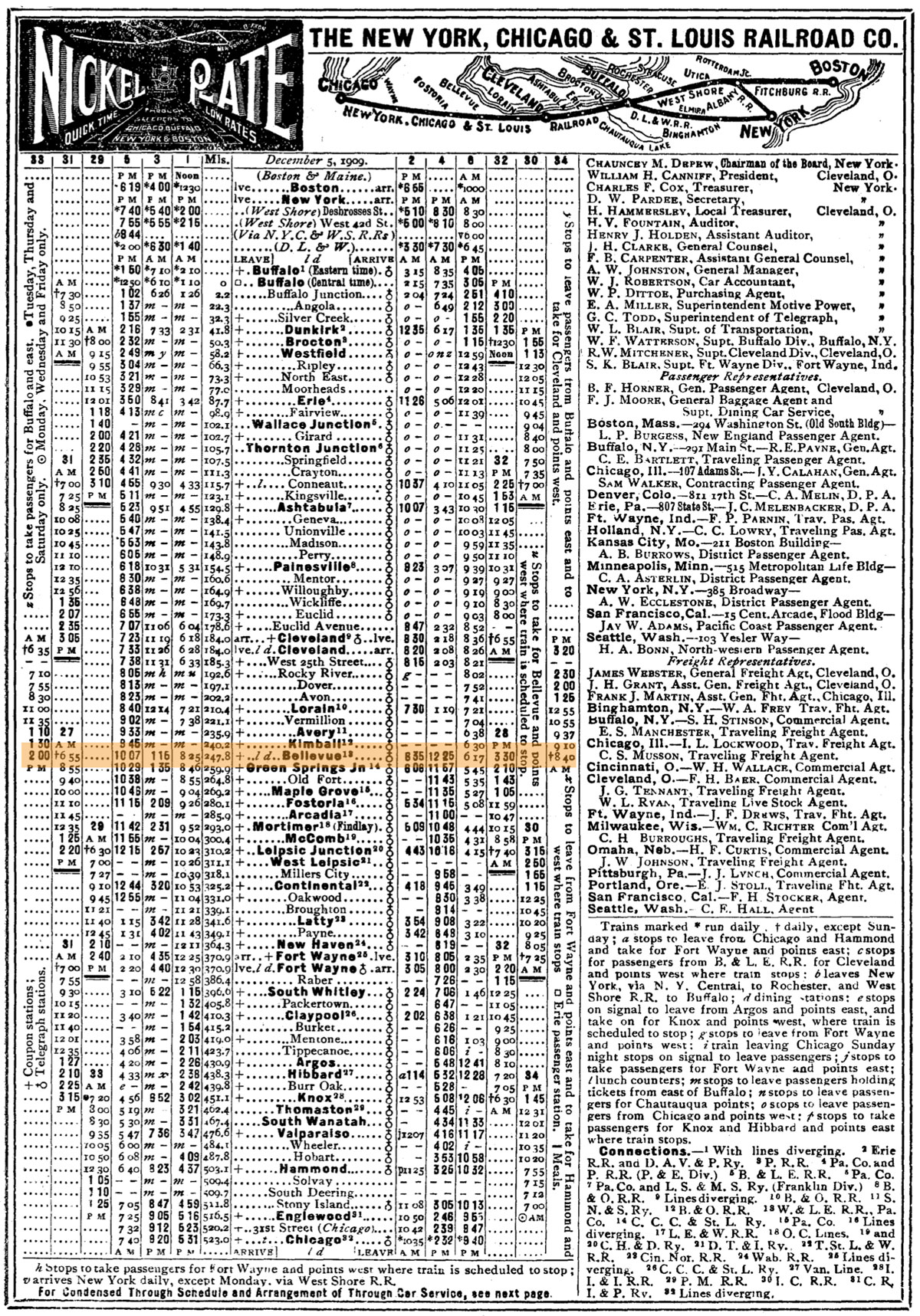
1910 Official Guide ad / collection

The New York, Chicago & St. Louis Railroad Company (NYC&StL - Reporting Mark NKP) had a storied 83 year existence. Starting as a single road built with cash, it ended with four districts as a result of acquisitions made over the years. It survived control by the New York Central and a joint venture with the C&O and Pere Marquette, and evolved into a leader in the delivery of freight with its renowned "Nickel Plate High Speed Service" and mighty Berkshires.
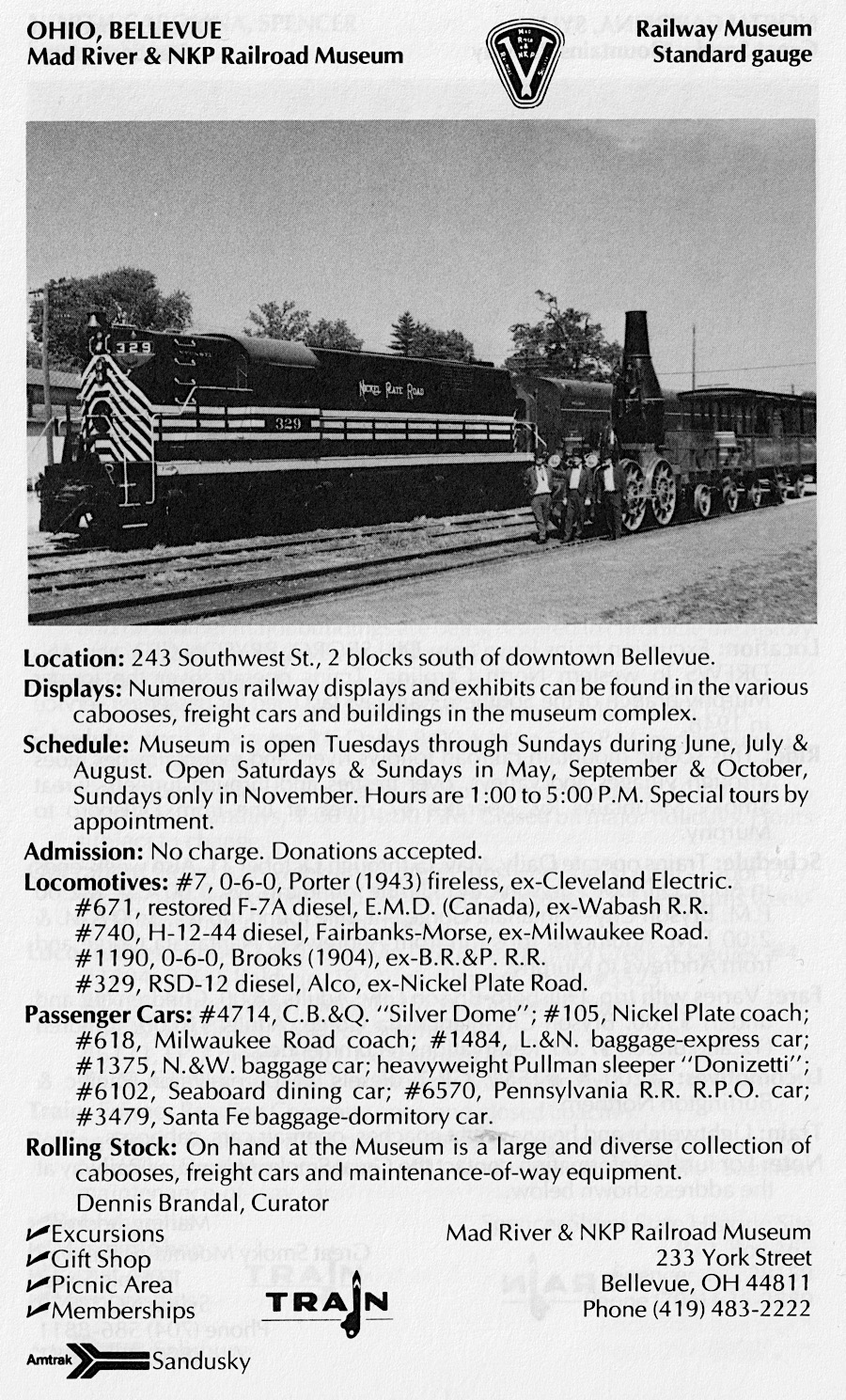
1989 tourist train guide ad / collection
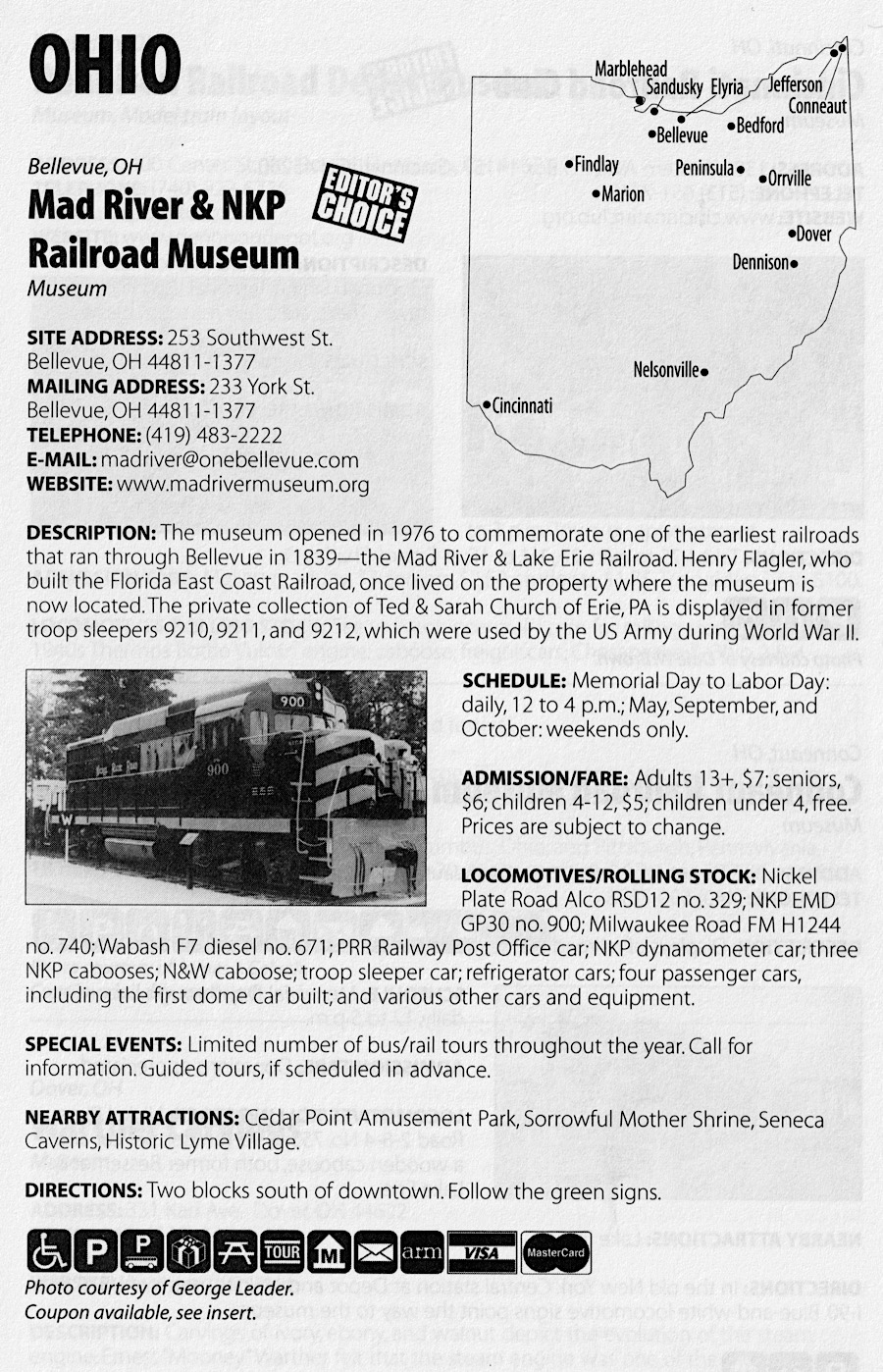
2006 tourist train guide ad / collection
Locomotives
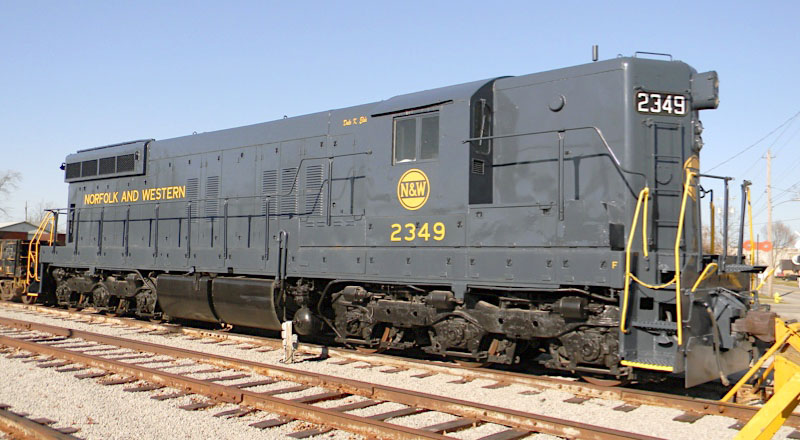
Norfolk & Western #2349
Bellevue, Oh / Dec 2014 / RWH


Norfolk & Western #2349
to Norfolk & Western #2349
to Norfolk Southern #52
to Mad River & NKP Railroad Museum


Norfolk & Western SD9 2349, formerly Nickel Plate 349, Norfolk Southern 52
On June 29, N&W SD9 2349, formerly NKP 349, NS 52 was dedicated in honor of the late Dale Elder. Mr. Elder was Bellevue's Terminal Superintendent for Norfolk Southern for many years. The locomotive has been restored to its N&W colors in honor of when Mr. Elder first signed on to the Norfolk & Western.
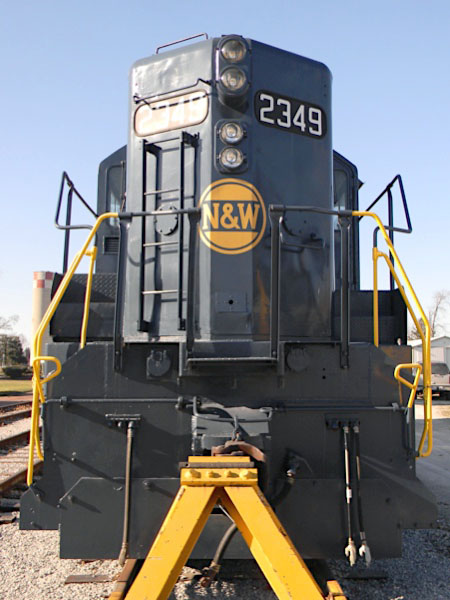
Dec 2014 / RWH
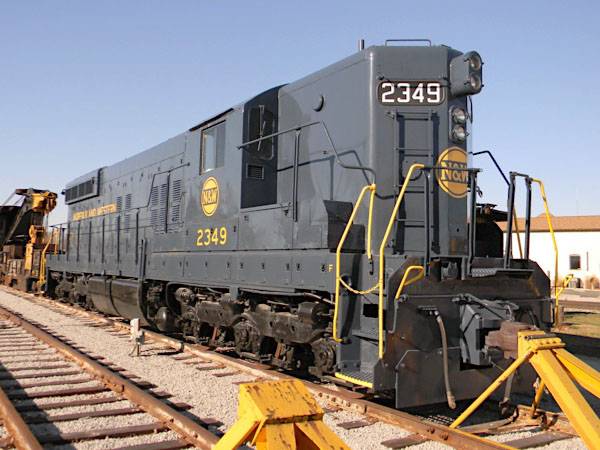
Bellevue, Oh / Dec 2014 / RWH
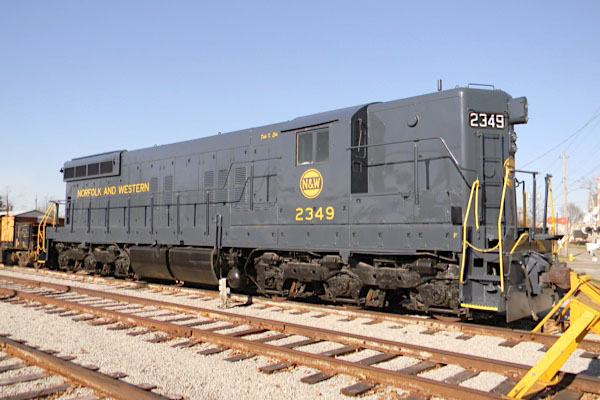
Bellevue, Oh / Dec 2014 / RWH

Bellevue, Oh / Dec 2014 / RWH
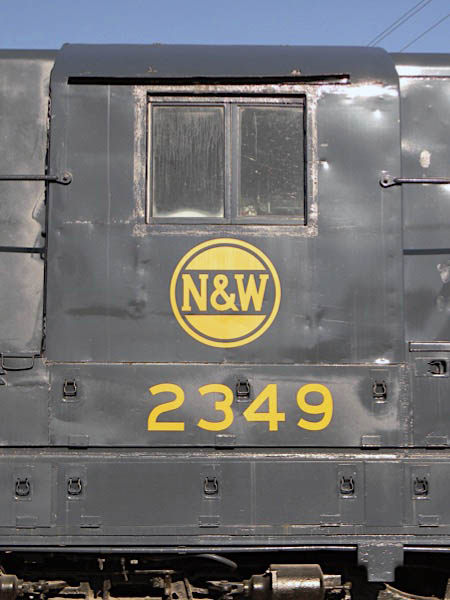
Dec 2014 / RWH
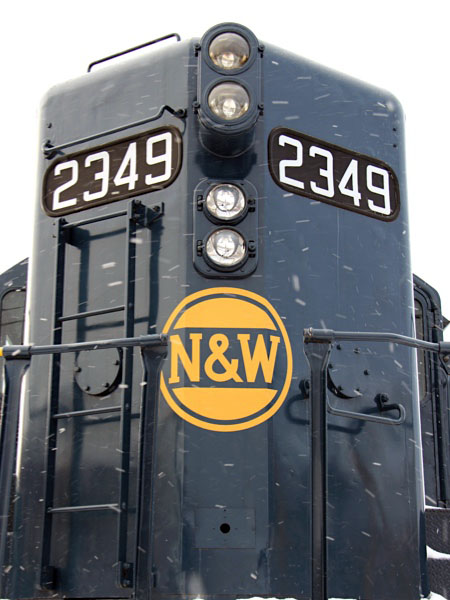
Feb 2016 / RWH
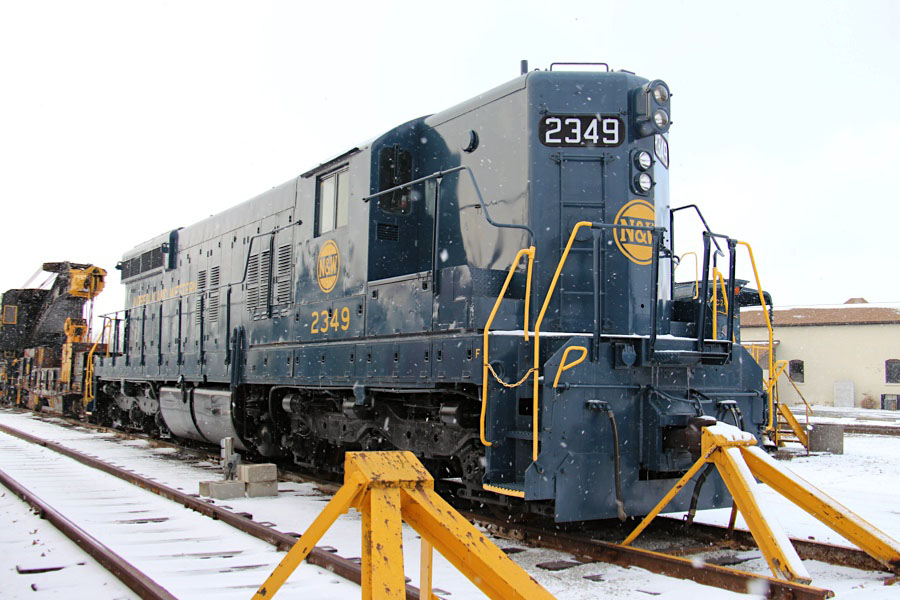
Bellevue, Oh / Feb 2016 / RWH

See also our complete Norfolk & Western Railway scrapbook in Mainlines

collection

Nickel Plate #329
Bellevue, Oh / Feb 2016 / RWH


Nickel Plate #329
1 of only 9 produced for Nickel Plate
to Norfolk & Western #254
to Mad River & NKP Railroad Museum

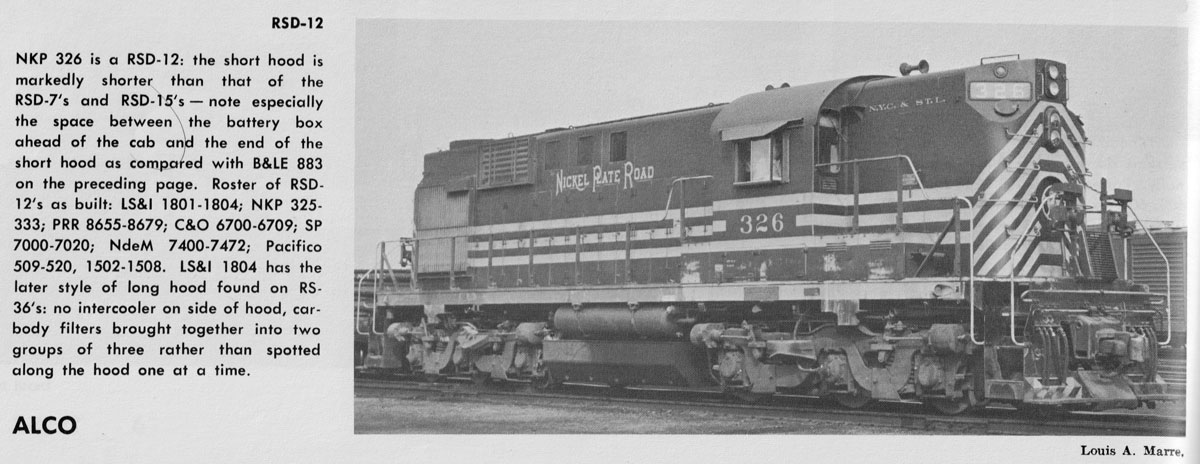
from The Second Diesel Spotter's Guide
/ collection
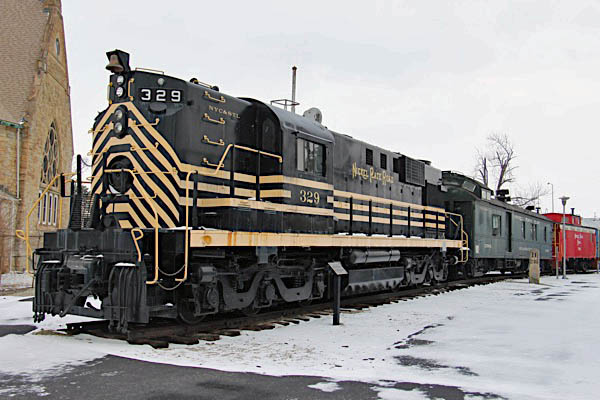
Bellevue, Oh / Feb 2016 / RWH
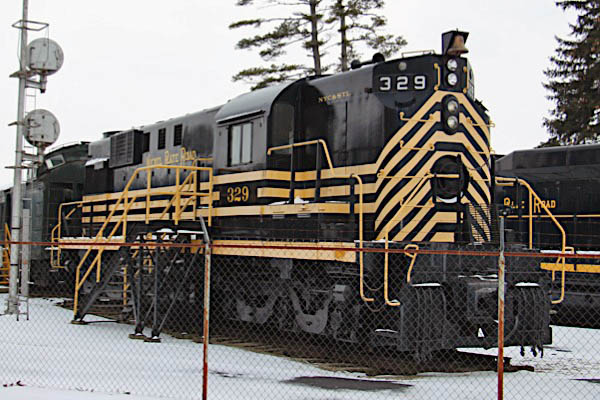
Bellevue, Oh / Feb 2016 / RWH
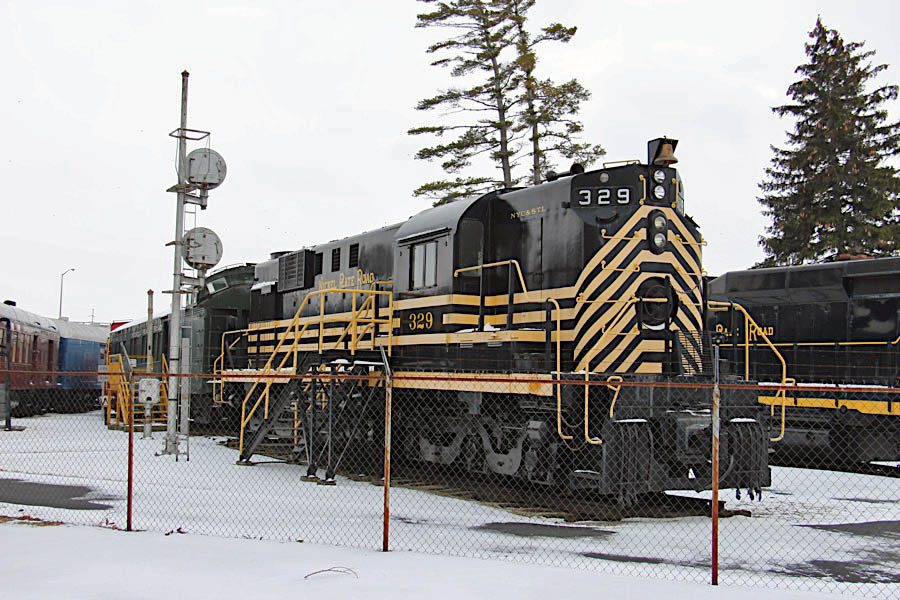
Bellevue, Oh / Feb 2016 / RWH

Nickel Plate #900
Bellevue, Oh / Feb 2016 / RWH


Nickel Plate #900
1 of only 10 produced for Nickel Plate
to Norfolk & Western #2900
to Norfolk Southern #2900
to Mad River & NKP Railroad Museum

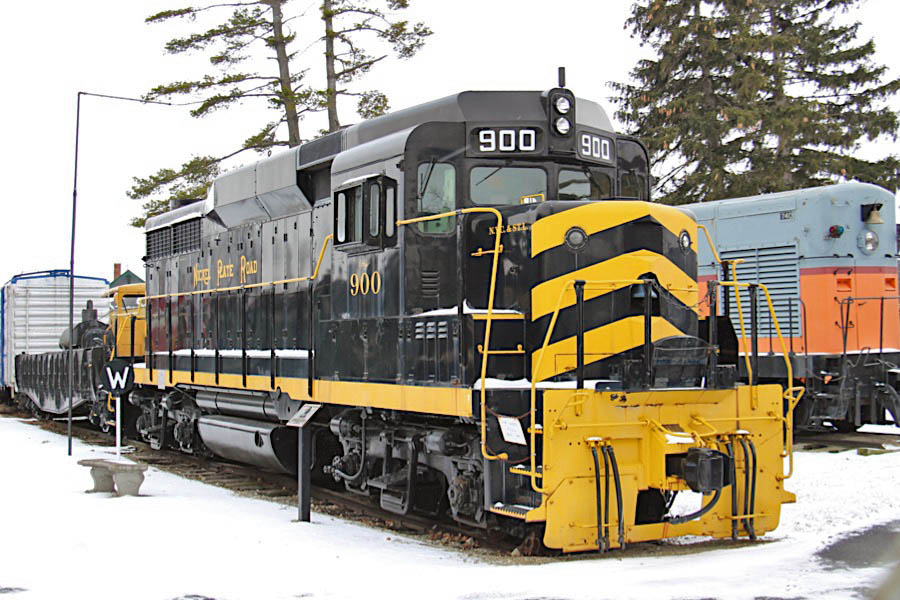
Bellevue, Oh / Feb 2016 / RWH
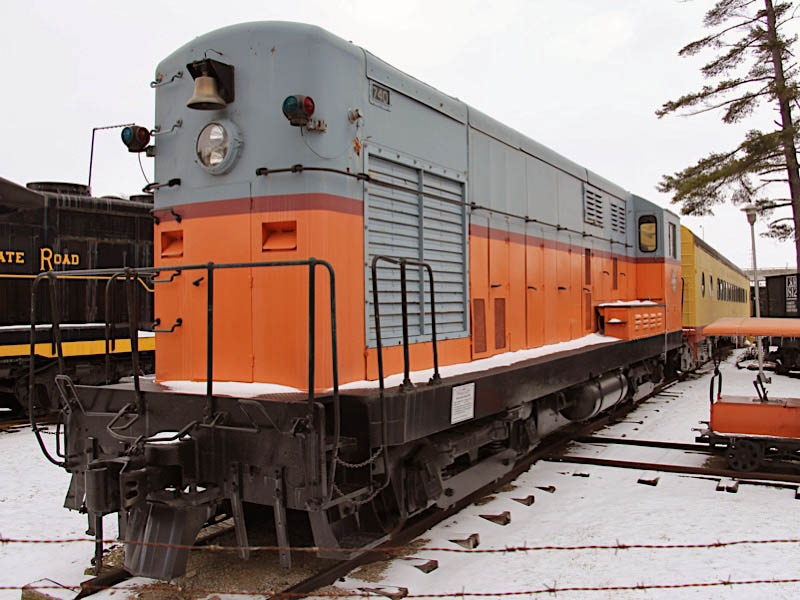
Milwaukee Road #740
Bellevue, Oh / Feb 2016 / RWH


Milwaukee Road #740
1 of 40 produced for Milwaukee Road
to Mad River & NKP Railroad Museum
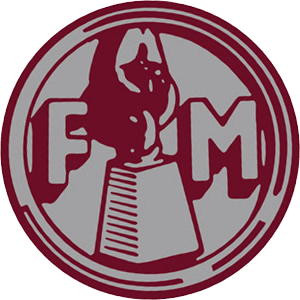
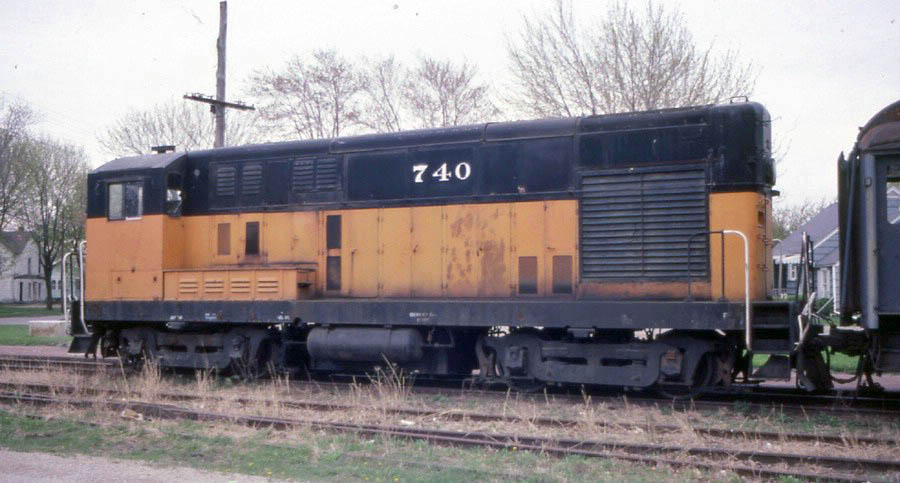 The FM H-12-44 was a yard switcher produced by Fairbanks-Morse from May, 1950–March, 1961. The units featured a 1,200-horsepower (890 kW), six-cylinder opposed piston engine prime mover, and were configured in a B-B wheel arrangement mounted atop a pair of two-axle AAR Type-A switcher trucks, with all axles powered and geared for a top speed of 60 miles per hour (97 km/h).
The FM H-12-44 was a yard switcher produced by Fairbanks-Morse from May, 1950–March, 1961. The units featured a 1,200-horsepower (890 kW), six-cylinder opposed piston engine prime mover, and were configured in a B-B wheel arrangement mounted atop a pair of two-axle AAR Type-A switcher trucks, with all axles powered and geared for a top speed of 60 miles per hour (97 km/h).
A total of 303 units were built for American railroads, 30 were manufactured (between August 1951 to June 1956) by the Canadian Locomotive Company for use in Canada, and 1 unit was exported to Mexico. Initially, H-12-44s were visually indistinguishable from their predecessor model, the FM H-10-44. However, beginning in September, 1952 the Raymond Loewy design elements were removed as a cost-saving measure: cab lines were squared-off, the slanted-nose styling was discontinued, and the roof visor was eliminated. The following year, the fairing over the battery box was removed and louvers added to reduce the possibility of battery explosions. None of the units were produced between May and October 1956, after which time the carbodies were shortened by some three feet and outfitted with a deeper side skirt.
Sixteen intact examples of the H-12-44 are known to survive today, all of which are owned by railroad museums or historical societies.
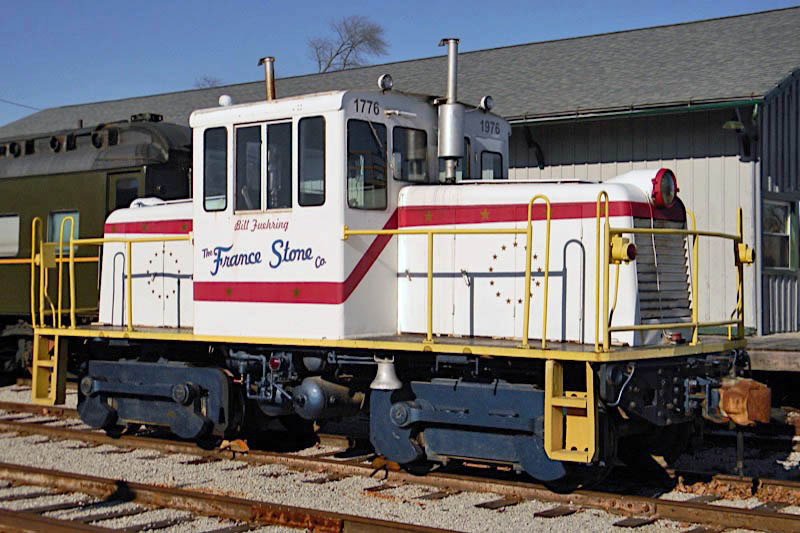
France Stone Company #1776
Bellevue, Oh / Dec 2014 / RWH


France Stone Company #1776
to France Stone Company #1776
to Mad River & NKP Railroad Museum
Bicentennial paint scheme

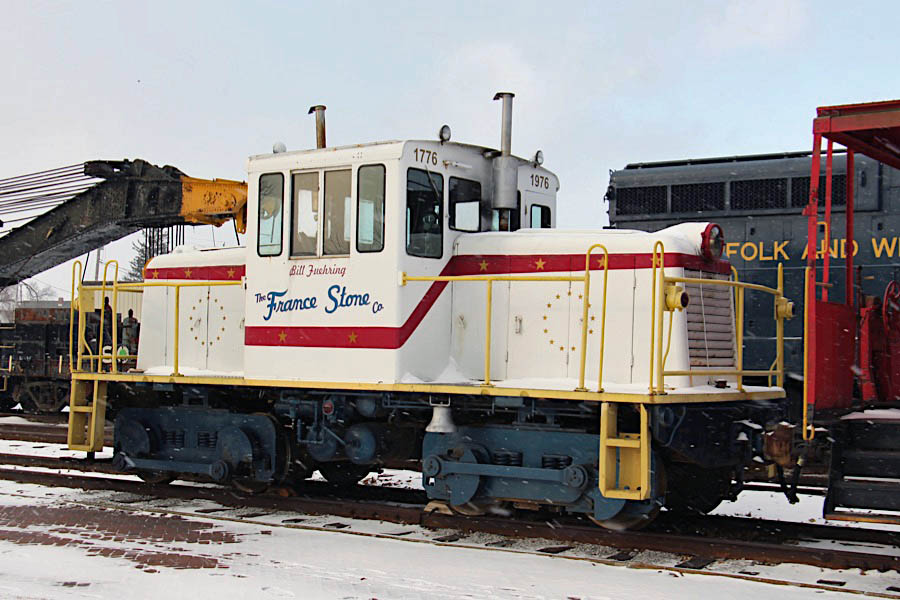
Bellevue, Oh / Feb 2016 / RWH
Unlettered

Bellevue, Oh / Dec 2014 / RWH

Bellevue, Oh / Dec 2014 / RWH
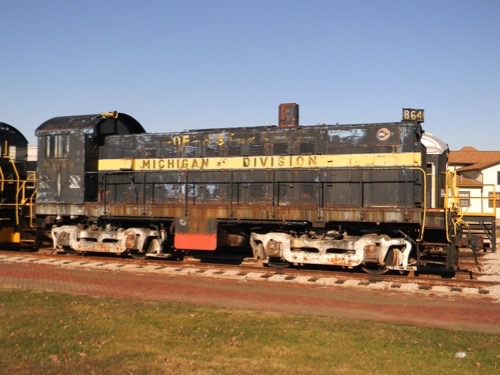
Bellevue, Oh / Dec 2014 / RWH

Bellevue, Oh / Dec 2014 / RWH

Bellevue, Oh / Dec 2014 / RWH

Bellevue, Oh / Feb 2016 / RWH
Passenger Cars

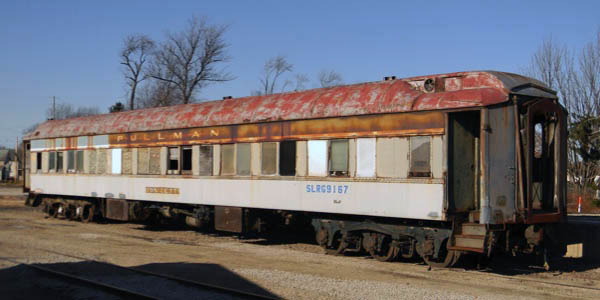



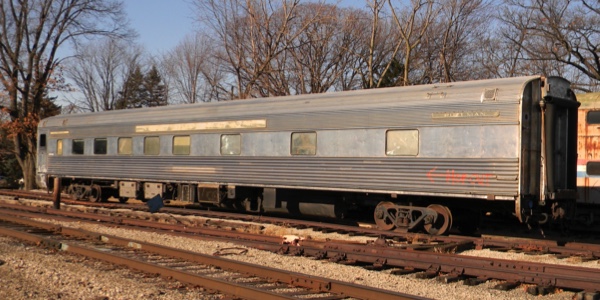

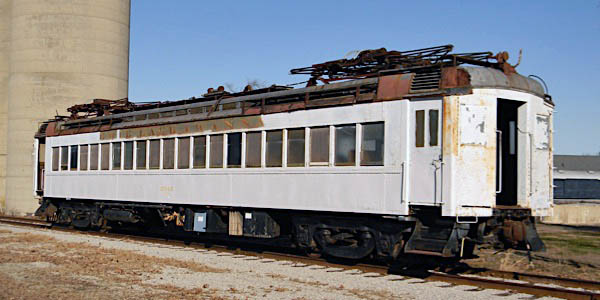


Bellevue, Oh / Dec 2014 or Feb 2016 / RWH
Rolling Stock

Baltimore & Ohio #C2424
caboose / Bellevue, Oh / Feb 2016 / RWH

Ohio Railway Supply #783
caboose / Bellevue, Oh / Feb 2016 / RWH

Norfolk & Western #557981
caboose / Bellevue, Oh / Feb 2016 / RWH
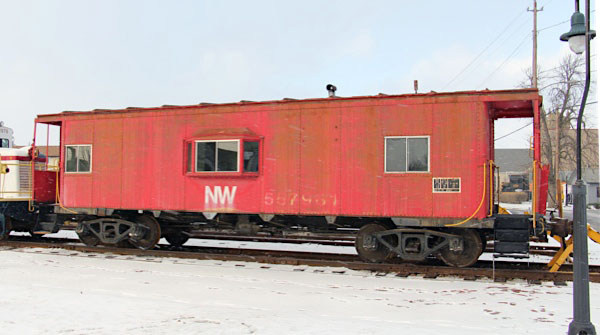
Bellevue, Oh / Feb 2016 / RWH

New York Central X665
snow plow / Bellevue, Oh / Dec 2014 / RWH

Norfolk & Western #514900
Bellevue, Oh / Dec 2014 / RWH


Norfolk & Western #514900
later renumbered #514900
to Norfolk Southern #514900
to Mad River & NKP Railroad Museum
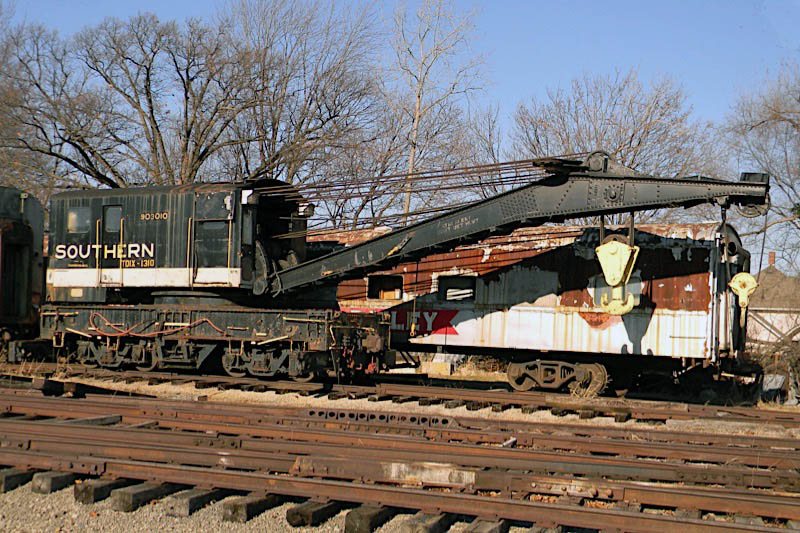
Southern Railway #903010
heavy derrick crane / Bellevue, Oh / Dec 2014 / RWH

Bellevue, Oh / Dec 2014 / RWH

Bellevue, Oh / Dec 2014 / RWH

Southern Railway #903019
derrick crane flatcar / Bellevue, Oh / Dec 2014 / RWH
Publications
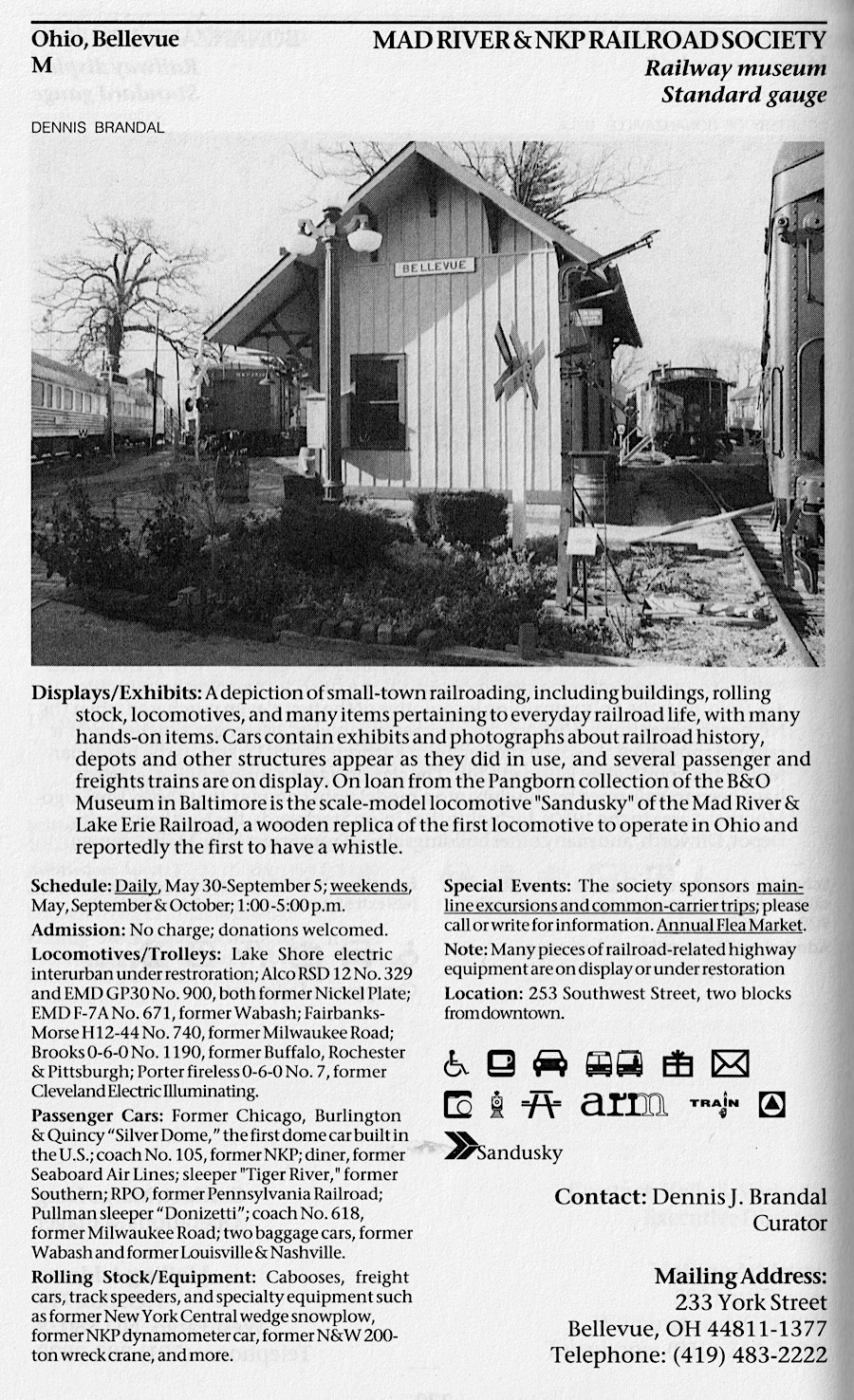
1994 tourist train guide ad / collection

1998 tourist train guide ad / collection
Lagniappe



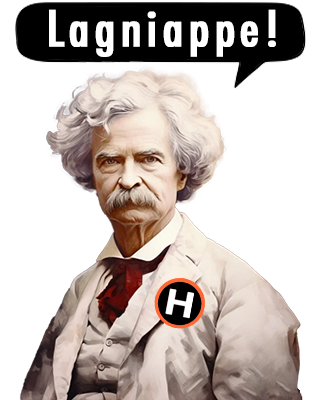

Pevler Performer
Bellevue, Oh / Dec 2014 / RWH
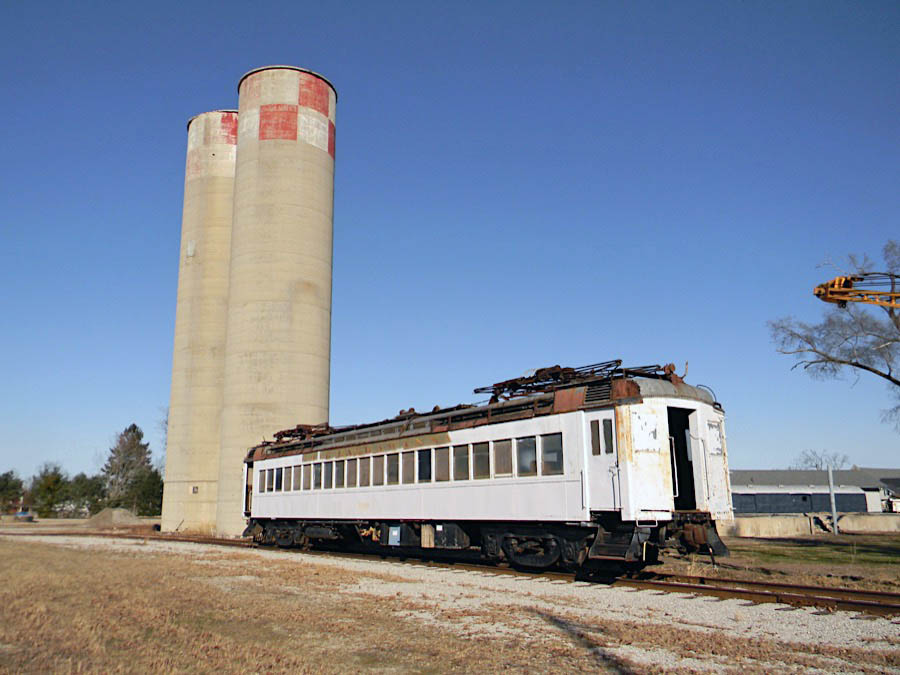
End of the Line
Bellevue, Oh / Dec 2014 / RWH

Don't Get Hurt
Bellevue, Oh / Dec 2014 / RWH
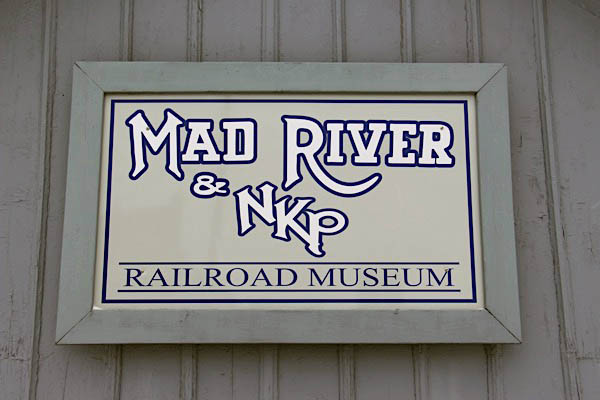
Bellevue, Oh / Dec 2014 / RWH
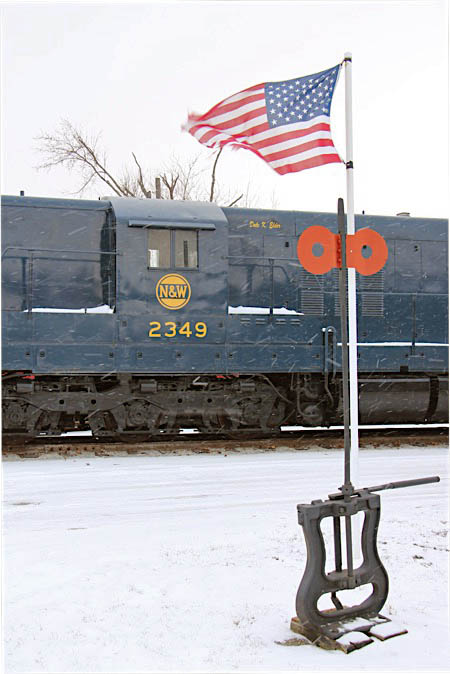
Winter Warrior
Bellevue, Oh / Feb 2016 / RWH
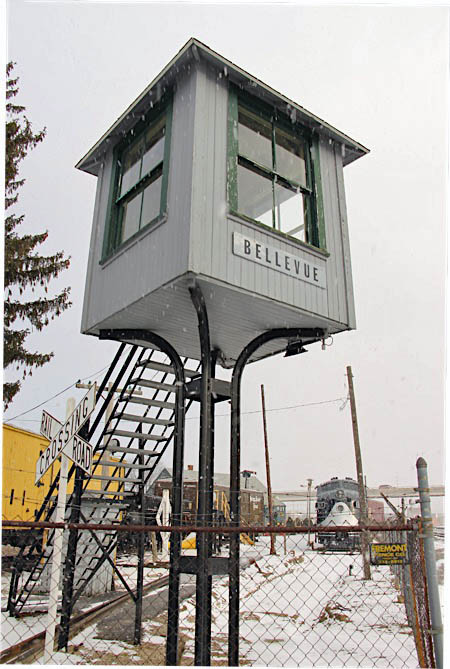
February Shelter
Bellevue, Oh / Feb 2016 / RWH


